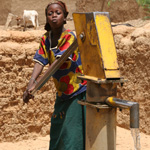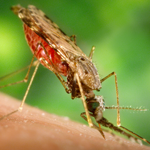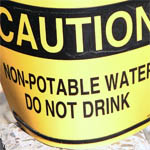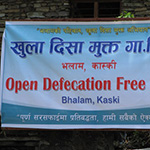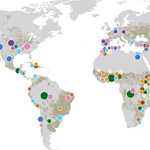Chapter 7 - Sustainable Solutions for Water Resources
Part 5 - Water Reuse and Recycling
 With increasing water demands, the reuse of reclaimed water is becoming an important issue of water management. Once the wastewater has been treated there are two main discharge paths the water can take. The first option is discharging into a surrounding water body like a river or stream. The second option is reuse. There are numerous ways water can be reused, the most common methods are:
With increasing water demands, the reuse of reclaimed water is becoming an important issue of water management. Once the wastewater has been treated there are two main discharge paths the water can take. The first option is discharging into a surrounding water body like a river or stream. The second option is reuse. There are numerous ways water can be reused, the most common methods are:
- Landscaping irrigation
- Groundwater or aquifer recharge
- Industrial recycling and reuse
- Recreational/environmental reuse
- Non-potable (Fire protection, air conditioning, toilet flushing)
However, there has been significant development in using reclaimed water for other purposes, including:
- Agricultural irrigation
- Indirect and direct potable uses
There are numerous benefits from using reclaimed water. This is not only a sustainable practice, but also reduces the use of potable water for non-potable purposes, like landscape irrigation. However there are several concerns associated with using reclaimed water. Aside from the obvious “ick” factor, the major concerns include:
- Water quality: the level of treatment
- Trace pathogens that are not completely removed during treatment
- Pharmaceutical drugs/metabolites, chemical residue from personal care products, and endocrine disrupting compounds
- Heavy metals
The United States is the leader in the use of reclaimed water, specifically in California and Florida. California has paved the way for other states in shaping water reuse standards are classifications. Currently reclaimed water is not regulated by the EPA, but by each state. Therefore reclaimed water uses and standards varies across the country. There are four recycled water classifications including A, B, C and D. Reclaimed water is classified by the level of treatment, the more intensive treatment produces Class A water.
Classification is based on the level or concentration of total coliform and turbidity.
Class A recycled water must go through intensive disinfection and tertiary treatment process. Class A water must have less than 2.2 MPN/100mL total coliform and an average turbidity level of 2NTU. Class A water can be used for food crop irrigation, landscaping irrigation and lesser restrictive uses. However, depending on the food crop, there can be further restrictions, like how the water is applied and growing point. One major concern associated with recycled water reuse is the transfer of pathogens. Pathogens can travel up to 1000 feet in the air; therefore spray irrigation is limited to only Class A water.
Class B recycled water undergoes secondary treatment, with pathogen removal. Class B water must have less than 2.2 MPN/100mL total coliform without any turbidity restrictions1. Class B water can be used for most purposes with the exception of parks and playgrounds, food crop irrigation, and non-restricted impounds.
Class C recycled water is similar to Class B, however the allowable total coliform is less than 23 MPN/100mL, with no turbidity restrictions. Typically Class C water undergoes secondary treatment with mild pathogen removal. Class C water can be used in the same applications as Class B, with the exception of food crop irrigation, non-restricted impounds, and watering yards for animals.
The last classification is Class D water. Class D water undergoes secondary treatment with no pathogen removal. Class D water is not regulated for total coliform or turbidity. The typically applications are irrigation of plants like fodder, fiber, seed orchard, tree crops and crops that are commercially processed. Class D water is prohibited from areas that would affect humans, livestock or food crops.
Water Reclamation around the World
The previously mentioned classifications apply strictly to the United States. However in other parts of the World, water reclamation is a huge part of their water management strategy. Aside from California, other world leaders in water reclamation include Japan, Australia and Spain. Currently Spain has the second largest reclamation program in the world, with recycling over 12% of their nation’s waste.
In developing countries, there are limited resources for water treatment. Typically available funds are allocated for protecting health and health delivery systems. Therefore not only is water reclamation extremely rare, but wastewater treatment as well. According to the World Health Organization over one billion people defecate in the open.
Conclusion
Water is integrated into every aspect of our lives and it is important to protect this valuable resource. Wastewater treatment and reuse are two ways to help protect the health our surface waters, and ensure that future generations will be able to enjoy them.
Keywords
Suggested Reading
- "Water Recycling and Reuse | Region 9: Water | US EPA." US Environmental Protection Agency, 2011.
- "WHO | WHO/UNICEF Joint Monitoring Report 2010: Progress on Sanitation and Drinking Water." Water Sanitation and Health (WSH). World Health Organization, 2011.
- "Direct Potable Reuse" WateReuse Research Foundation, 2011, pp. 1-85. (free order pdf download)
(Photo credit: Marex06)
Written by Kiersten Lee and Gregory Möller)


